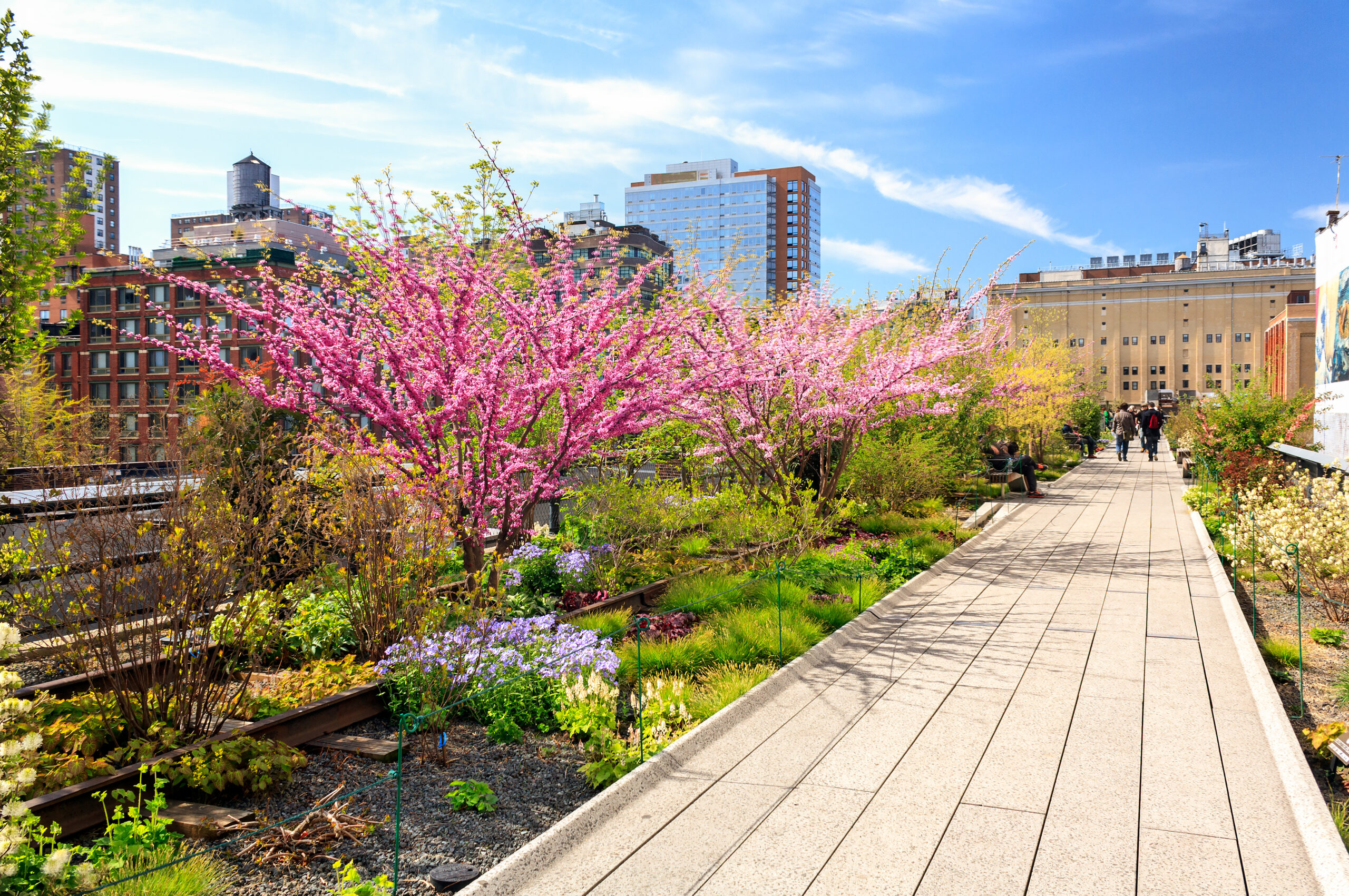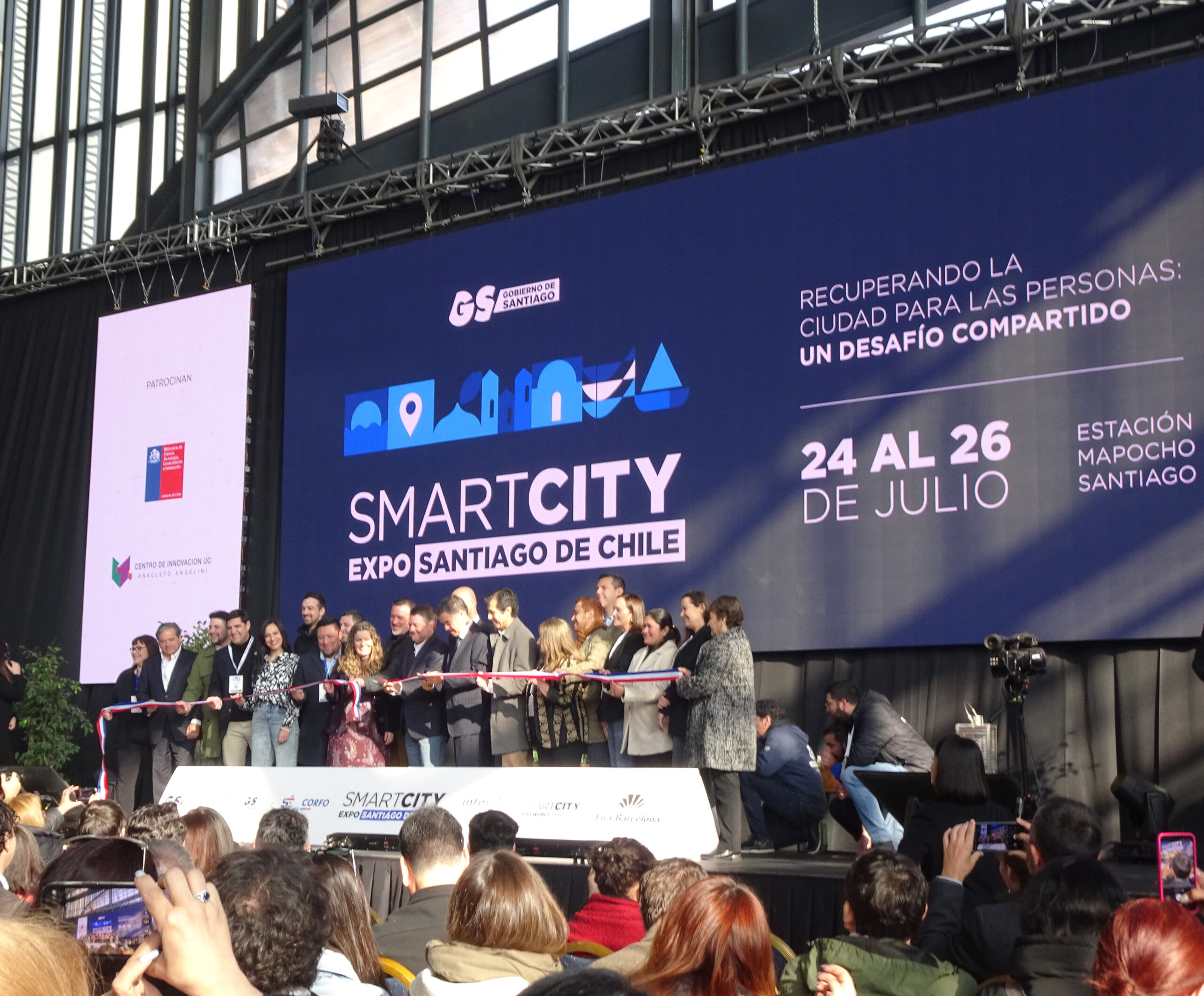Green spaces like parks, community gardens or plazas are oases in cities; they act as lungs full of oxygen within the bustling rhythm of today’s urban landscape. They are not merely places for leisure and recreation, they strongly contribute to the well-being and the quality of life of residents in both physical and mental aspects.
In this sense, we know that livability is the overall combination of the level and quality of life in a particular place, such as a neighborhood. It encompasses a wide range of factors that significantly impact people’s well-being and satisfaction. A vital aspect of livability is the environment: clean air, water quality, green spaces, and natural surroundings are foundational to urban livability. Additionally, the walkability of an area plays a crucial role, ensuring that residents can easily access essential services and recreational spaces, thereby enhancing their daily lives.
The concept of green spaces in cities dates to ancient civilizations. In ancient Mesopotamia there were walled gardens and parks that served as both recreational spaces and a way to showcase the wealth and power of the rulers (i.e. Hanging Gardens of Babylon). During the Roman Empire, public gardens and parks were common in cities, commonly used for leisure, social gatherings, and even political discussions. The Romans understood the importance of greenery for public health and well-being. Nevertheless, it was not until the Renaissance that public gardens and parks began to re-emerge in European cities, influenced by the classical ideals of balance, beauty, and harmony with nature.
The modern concept of urban green spaces began in the 19th century during the Industrial Revolution: the rapid urbanization and the growth of cities led to overcrowding, pollution, and poor living conditions. Some visionaries such as Frederick Law Olmsted, who designed Central Park in New York City, advocated for the creation of public parks to provide city dwellers with a respite from the industrial landscape. Another example was Baron Haussmann, who played a crucial role in the transformation of Paris. His renovation project included the creation of wide boulevards, new parks and plazas, and the improvement of sanitary infrastructure. Modernization involved the demolition of slums that were considered overcrowded and unsanitary, replacing them with open spaces. At the end of the 19th century, the Garden City concept was created by Ebenezer Howard, aiming to combine the benefits of both rural and urban living while avoiding their respective disadvantages. The first garden city, Letchworth, was established in 1903, followed by Welwyn Garden City in 1920.
Today, urban green spaces revolve around the concepts of sustainable urban design, integrating natural elements into urban environments to improve residents’ quality of life. Green urbanism, for example, focuses on creating cities in harmony with nature by incorporating green roofs, vertical gardens, and urban parks. Conversely, sustainable urban design employs a variety of other strategies aimed at creating resilient and environmentally friendly cities.
The Crucial Role of Accessible Green Spaces
The accessibility to parks within a short distance aligns with the 15-minute city’s goal of creating walkable and bike-friendly neighborhoods. They encourage outdoor activities, which can improve physical and mental health, providing a place for relaxation, exercise, and social interaction, promoting a higher quality of life. What’s more, these outdoor places foster social interactions and community engagement, offering opportunities to socialize, play sports, attend events, and build the sense of inclusiveness.
From the environmental point of view, green spaces help reduce air pollution, mitigate urban heated islands, and support biodiversity, all essential in making cities more sustainable and resilient to climate change. In addition, plants and trees in urban areas work as carbon sinks, absorbing carbon dioxide, and helping to reduce the overall carbon footprint. Finally, green spaces enhance the beauty and attractiveness of neighborhoods, making them more pleasant places to live. This can lead to increased property values, attracting businesses, real estate investments and more residents, boosting local economies.
Overcoming Challenges
Cities and neighborhoods face many challenges on their path to achieving a more sustainable and livable standard. Urban areas frequently struggle with limited available land and exorbitant land prices, presenting significant challenges in designating space for parks and green areas. This scarcity and high cost of land make it increasingly difficult to create and maintain green spaces that are essential for urban well-being and environmental health.
Effective urban planning and zoning regulations are crucial for incorporating green spaces into city layouts. Nevertheless, outdated or overly restrictive zoning laws can obstruct the development of new green areas, limiting opportunities to enhance urban environments and promote ecological balance. Additionally, engaging the community and ensuring that green spaces meet the needs and desires of residents can be challenging. It is important to involve the community in the planning and design process to create spaces that are well-used and appreciated. By combining thoughtful urban planning with community involvement, cities can overcome these challenges and foster green areas that contribute to the well-being of both people and the environment.
Creating and maintaining green spaces often poses a significant challenge because city administrations typically lack sustainable funding sources to support these initiatives. This issue is further exacerbated by competing budget priorities, economic constraints, and the need for long-term planning and investment. Additionally, public awareness and advocacy for green spaces can vary, influencing the level of political and financial support these projects receive. Public-private partnerships, non-profits, and community organizations can play a crucial role in bridging the funding gap and ensuring the sustainability of green space initiatives.
High Line Park: Transforming an Abandoned Rail Line into a Sustainable Urban Oasis
High Line Park is a remarkable example of urban intervention and transformation of an abandoned elevated freight rail line into a vibrant urban green corridor, blending historical elements with contemporary design to create a functional and sustainable public space. The High Line completes approximately 2.33 kilometers (1.45 miles) from Gansevoort Street in the Meatpacking District to 34th Street near Hudson Yards. Currently the park is owned by the City of New York and maintained, operated, and programmed by the Friends of the High Line in partnership with the city’s department of Parks and Recreation.
The High Line was originally constructed in the 1930s to transport goods, including meat, raw materials, and manufactured products, from the West Side Blocks to nearby factories in Manhattan. The initial High Line elevated roadbed was part of the West Side Improvement Project, motivated by the discontent over citizens being injured and killed by the freight trains that traveled up and down 10th and 11th Avenues.
In the 1980s, the High Line was unused and slated for demolition due to the rise of containerized shipping. In 1999, the non-profit conservancy organization Friends of the High Line advocated for its preservation and transformation into a public park that was approved by the city. The park opened in different sections starting with the first section in 2009 from Gansevoort Street to West 20th Street. In 2011, section 2 opened to the public from West 20th Street to West 30th Street. Later, the New York City Planning Commission approved a zoning text amendment allowing the third segment to be constructed and section 3 opened in 2014 running from West 30th Street to West 34th Street.
The project integrates sustainable concepts, embedding original spurs and rail tracks within planting beds. The selection of greenery, trees, and plants prioritizes native, drought-tolerant, and low-maintenance species. The ecosystem provides food and shelter for wildlife species, including native pollinators. The drip irrigation system, which reflects the concepts of green roofs designs, allows the planting beds to retain as much water as possible. The intricate drainage system reduces storm-water runoff by up to 80% and tempers the flow of excess water into the sewer system.

High Line Park, New York City, New York (Photo: Adobe Stock)
The High Line intervention has had a profound impact on the economic growth and revitalization of the neighborhoods it traverses. This transformation is evident in several key areas:
- Property values have increased substantially, attracting significant real estate investment.
- Neighborhood revitalization efforts have transformed areas like the Meatpacking District, and new projects such as Hudson Yards have been developed.
- The presence of cultural institutions like the Whitney Museum nearby has enriched the cultural landscape.
- The new real estate development has drawn a variety of new eateries and pubs, establishing a lively entertainment atmosphere that defines the area’s charm.”
However, one of the negative impacts of the High Line project is gentrification. The rise in property values and rents caused the displacement of small businesses and long-term residents, raising concerns about social equity and community cohesion.
In summary, green spaces are essential for urban areas as they enhance community sustainability. Effective land-use planning, such as the High Line project, is crucial, particularly in underserved neighborhoods. Through a collaborative approach, public-private partnerships, along with urban planners and the local community, can repurpose unused land, stimulate economic development, and promote residents’ well-being, thereby ensuring sustainable cities.
Resources
Urban Green Spaces: Sustainability Benefits & Challenges
Introducing the “15-Minute City”: Sustainability, Resilience and Place Identity in Future Post-Pandemic Cities
Cohen, Steven. “The sustainable city”. Columbia University Press, 2017.
History | The High Line



